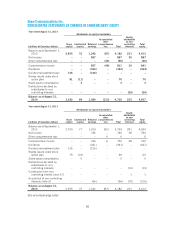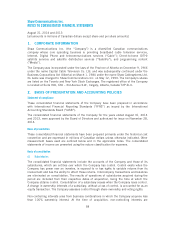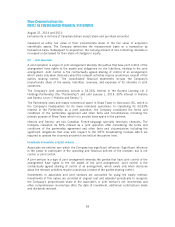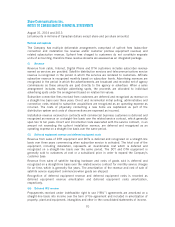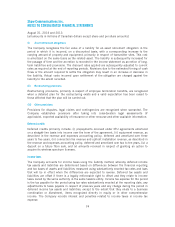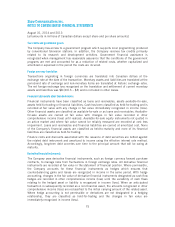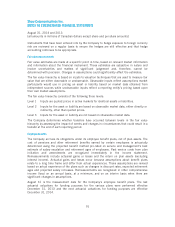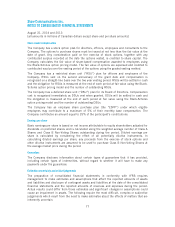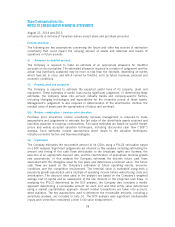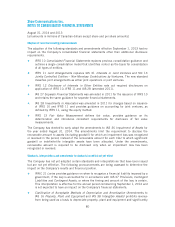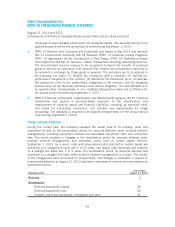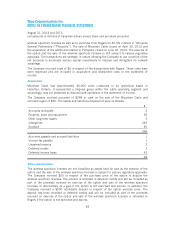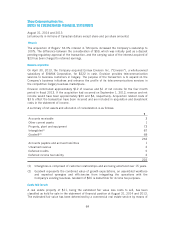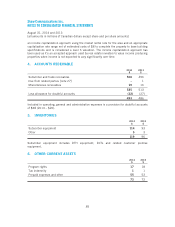Shaw 2014 Annual Report Download - page 80
Download and view the complete annual report
Please find page 80 of the 2014 Shaw annual report below. You can navigate through the pages in the report by either clicking on the pages listed below, or by using the keyword search tool below to find specific information within the annual report.Shaw Communications Inc.
NOTES TO CONSOLIDATED FINANCIAL STATEMENTS
August 31, 2014 and 2013
[all amounts in millions of Canadian dollars except share and per share amounts]
Instruments that have been entered into by the Company to hedge exposure to foreign currency
risk are reviewed on a regular basis to ensure the hedges are still effective and that hedge
accounting continues to be appropriate.
Fair value measurements
Fair value estimates are made at a specific point in time, based on relevant market information
and information about the financial instrument. These estimates are subjective in nature and
involve uncertainties and matters of significant judgement and, therefore, cannot be
determined with precision. Changes in assumptions could significantly affect the estimates.
The fair value hierarchy is based on inputs to valuation techniques that are used to measure fair
value that are either observable or unobservable. Observable inputs reflect assumptions market
participants would use in pricing an asset or liability based on market data obtained from
independent sources while unobservable inputs reflect a reporting entity’s pricing based upon
their own market assumptions.
The fair value hierarchy consists of the following three levels:
Level 1 Inputs are quoted prices in active markets for identical assets or liabilities.
Level 2 Inputs for the asset or liability are based on observable market data, either directly or
indirectly, other than quoted prices.
Level 3 Inputs for the asset or liability are not based on observable market data.
The Company determines whether transfers have occurred between levels in the fair value
hierarchy by assessing the impact of events and changes in circumstances that could result in a
transfer at the end of each reporting period.
Employee benefits
The Company accrues its obligations under its employee benefit plans, net of plan assets. The
cost of pensions and other retirement benefits earned by certain employees is actuarially
determined using the projected benefit method pro-rated on service and management’s best
estimate of salary escalation and retirement ages of employees. Past service costs from plan
initiation and amendments are recognized immediately in the income statement.
Remeasurements include actuarial gains or losses and the return on plan assets (excluding
interest income). Actuarial gains and losses occur because assumptions about benefit plans
relate to a long time frame and differ from actual experiences. These assumptions are revised
based on actual experience of the plans such as changes in discount rates, expected retirement
ages and projected salary increases. Remeasurements are recognized in other comprehensive
income (loss) on an annual basis, at a minimum, and on an interim basis when there are
significant changes in assumptions.
August 31 is the measurement date for the Company’s employee benefit plans. The last
actuarial valuations for funding purposes for the various plans were performed effective
December 31, 2013 and the next actuarial valuations for funding purposes are effective
December 31, 2014.
76


